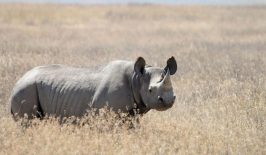The grey whale is one of the animal kingdom’s great migrators. Every year they migrate in groups called pods, swimming a 20,000 km round trip between Alaskan waters and the warmer Mexican coast close to Baja California. The other major group of grey whales lives in the seas of Korea. Scientists have developed a device to automatically track the formerly-endangered mammal.
The grey whale was close to extinction in the 20th century because of extensive hunting along North America’s West Coast. Their bone is prized for making ladies’ corsets and umbrella ribs. The mammal is now back in the safety net again thanks to the triumphant efforts of conservationists and scientists. In the past, scientists used high-powered binoculars to manually count (when whales came to the surfaace for air) the number of whales migrating annually. Unfortunately, the numbers were not always accurate given spotters were not stationed on the spot 24/7 and observation could take place only during daylight.
A team at NOAA soon came up with a system that combines three thermal infrared cameras with image recognition software which can automatically detect the whales. The system can continuously scan the movement of the whales based on the difference in temperature between the whales’ blow and the surrounding environment.
“A whale is this great big motor that takes in a breath of air and holds it inside for a long time. When it exhales, the air is much warmer than the background, and we can detect that difference very easily, both day and night.” said NAOAA fisheries scientists.
The system tracks individual whales and it predicts where and when that same whale will surface again. Now the observation and counting can take place day and night, and the sample size can be tremendously increased. This results in better estimation of the population size and scientists can foresee how the results of climate change, like melting sea ice, is affecting the mammals.



